Abstract
A total of 58 cultures, tentatively identified as species of the genus Cephalosporium, were screened in flask fermentations for their ability to effect conversions of progesterone (Δ4-pregnene-3,20-dione) and Reichstein's Substance S (Δ4-pregnene-17α,21-diol-3,20-dione). A large number of transformations were observed by means of a series of five paper chromatography systems rated for analysis of steroid compounds ranging in polarity from progesterone to polyhydroxylated steroids. Five different transformation products were selected for isolation and identification. For purposes of recovery, conversions were conducted under submerged conditions in either 4- or 200-liter fermentors in which the broth was agitated and aerated. The steroid substrate was dissolved in acetone and added aseptically to the growing culture in a final concentration of 0.025%. After the conversions were effected, the whole broth was extracted with chloroform, and the transformation products were recovered, either by direct crystallization from solvents or through the use of silica gel columns. It was determined that C. ciferrii 21C converted progesterone to Δ4-androstene-3,17-dione. Kendall's Compound F (Δ4-pregnene-11β,17α,21-triol-3,20-dione) was converted to its 20β-ol analogue by Geotrichum sp. 51C (during these studies, a number of cultures were taxonomically reclassified). Cephalosporium sp. 27C formed the Δ1-analogue of Reichstein's Substance S, and Cephalosporium sclerotigenum 31C and Verticillium aphidum both converted Substance S to the 6β-hydroxy derivative. Paecilomyces persicinus 22C converted Substance S to a product believed to be a dihydroxylated derivative.
Full text
PDF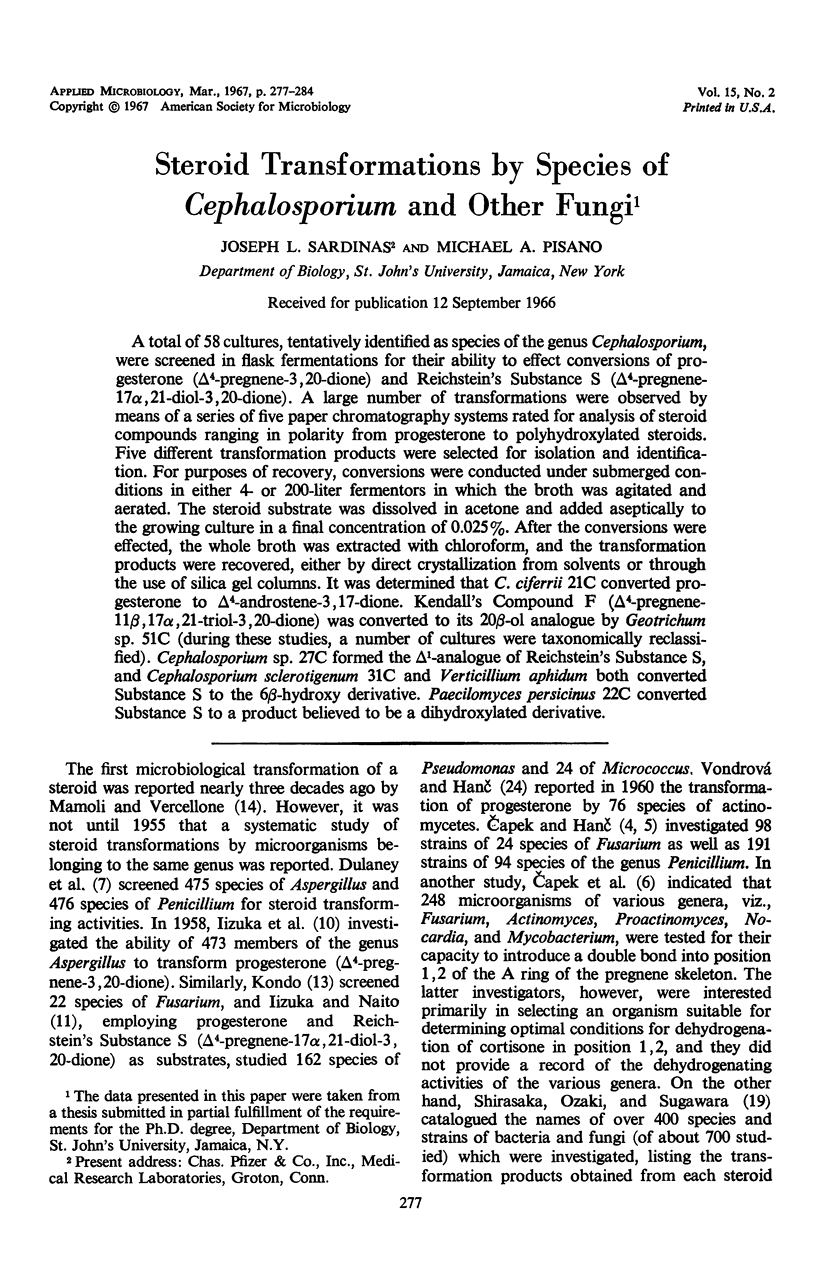
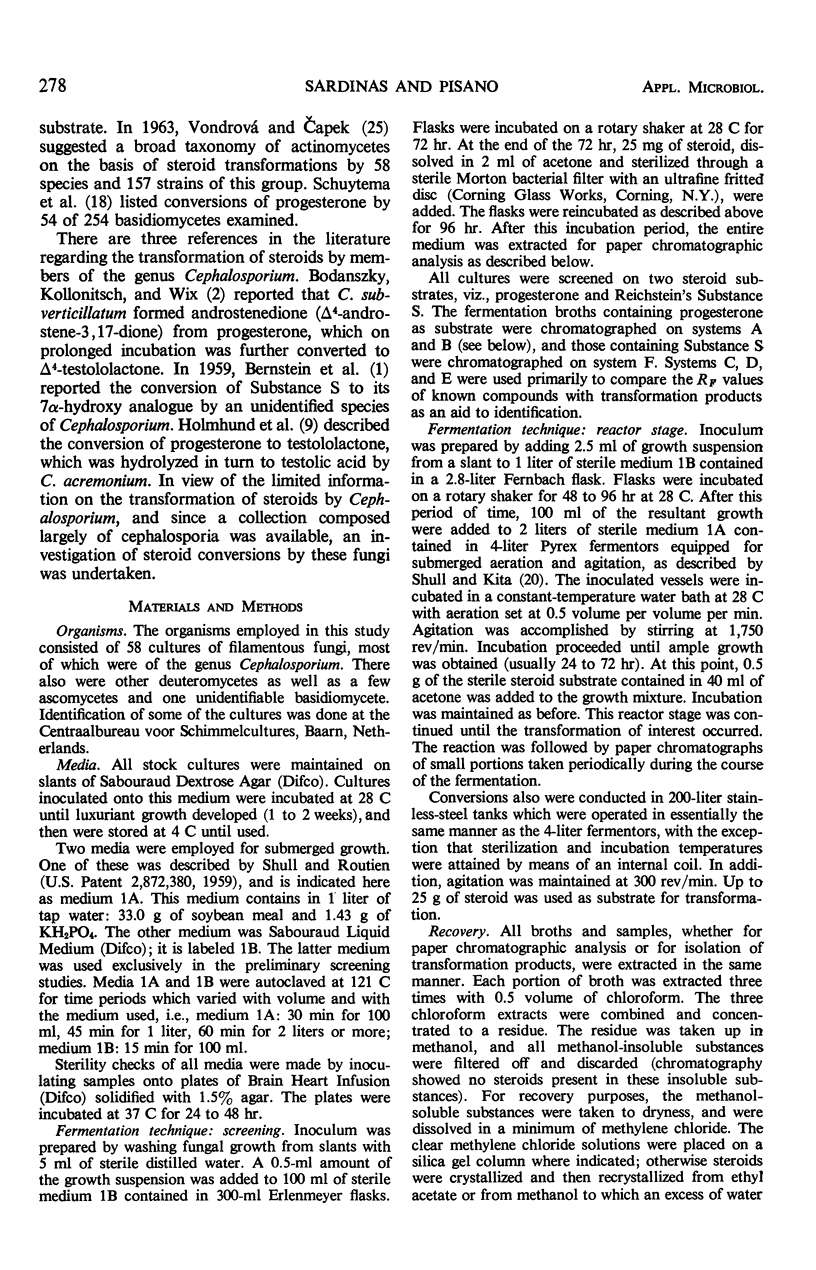
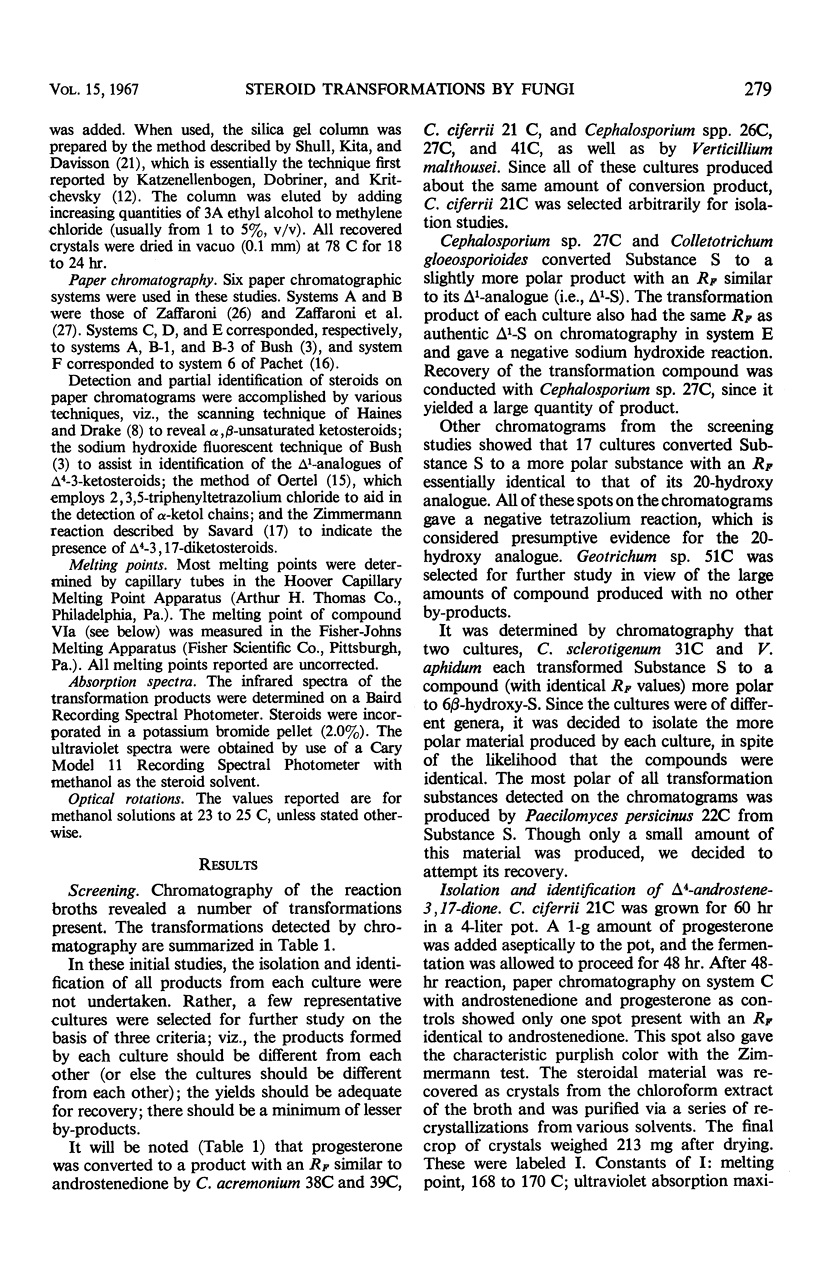
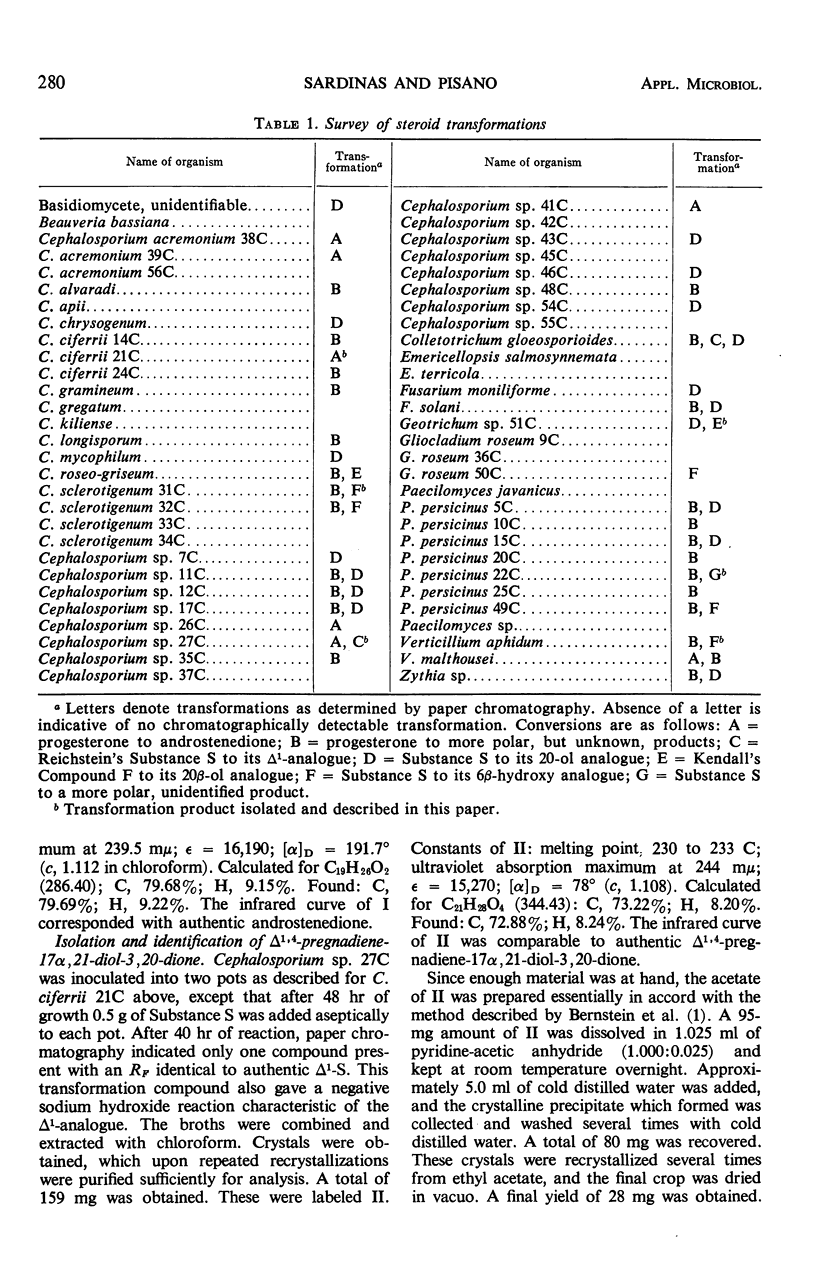
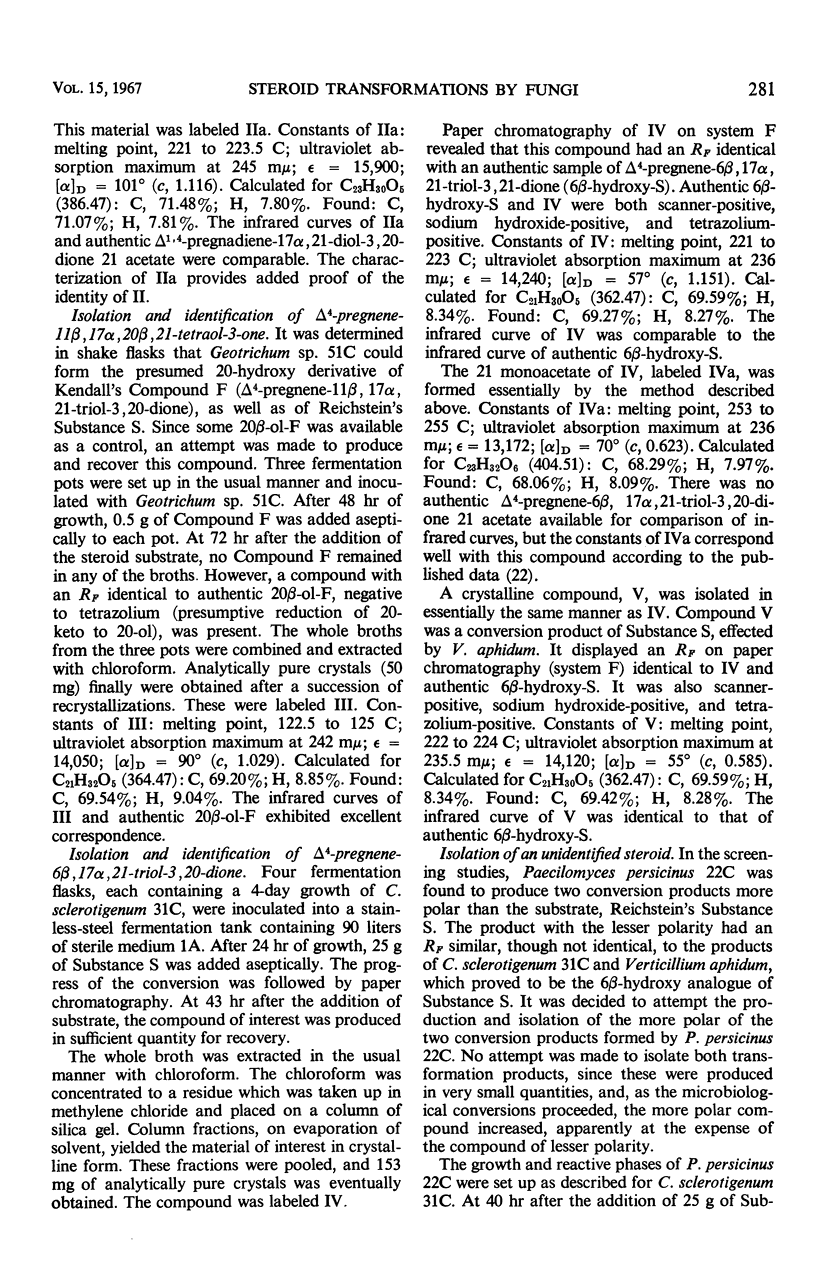

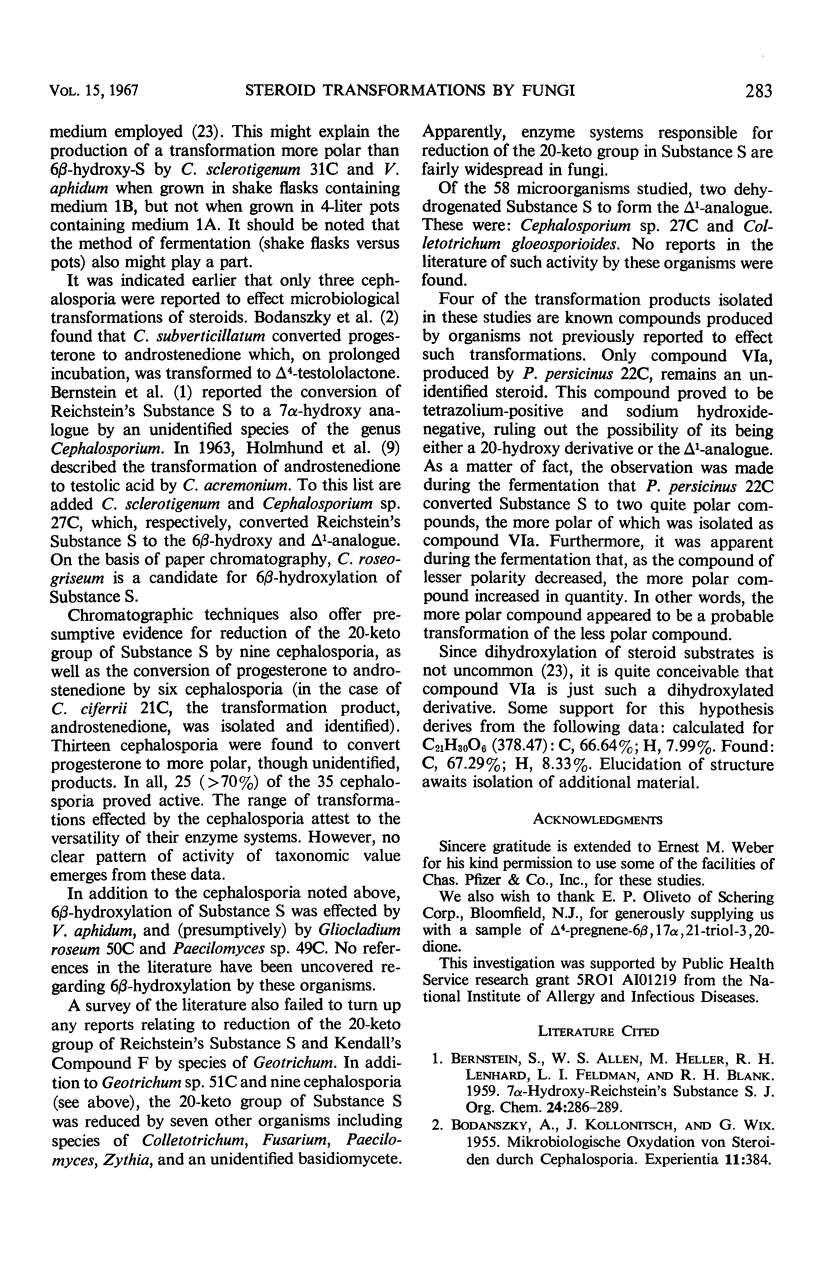

Selected References
These references are in PubMed. This may not be the complete list of references from this article.
- BODANSZKY A., KOLLONITSCH J., WIX G. Mikrobiologische Oxydation von Steroiden durch Cephalosporia. Experientia. 1955 Oct 15;11(10):384–384. doi: 10.1007/BF02158492. [DOI] [PubMed] [Google Scholar]
- BUSH I. E. Methods of paper chromatography of steroids applicable to the study of steroids in mammalian blood and tissues. Biochem J. 1952 Jan;50(3):370–378. doi: 10.1042/bj0500370. [DOI] [PMC free article] [PubMed] [Google Scholar]
- CAPEK A., HANC O. Microbial transformation of steroids. XVII. Transformation of progesterone by various species and strains of Penicillium. Folia Microbiol (Praha) 1962 Mar;7:121–125. doi: 10.1007/BF02927235. [DOI] [PubMed] [Google Scholar]
- DULANEY E. L., MCALEER W. J., KOSLOWSKI M., STAPLEY E. O., JAGLOM J. Hydroxylation of progesterone and 11-desoxy-17-hydroxycorticosterone by Aspergillus and Penicillium. Appl Microbiol. 1955 Nov;3(6):336–340. doi: 10.1128/am.3.6.336-340.1955. [DOI] [PMC free article] [PubMed] [Google Scholar]
- HOLMLUND C. E., BLANK R. H., SAX K. J., EVANS R. H., Jr MICROBIAL FORMATION AND HYDROLYSIS OF TESTOLOLACTONE. Arch Biochem Biophys. 1963 Oct;103:105–110. doi: 10.1016/0003-9861(63)90015-8. [DOI] [PubMed] [Google Scholar]
- KATZENELLENBOGEN E. R., DOBRINER K., KRITCHEVSKY T. H. Separation of steroid hormones and their metabolites by partition type chromatography. J Biol Chem. 1954 Mar;207(1):315–321. [PubMed] [Google Scholar]
- OERTEL G. Bestimmung von Corticoiden auf Papierchromatogrammen. Acta Endocrinol (Copenh) 1954 Jul;16(3):267–269. [PubMed] [Google Scholar]
- PECHET M. M. Method for the chromatographic separation of very polar steroids. Science. 1955 Jan 7;121(3132):39–40. doi: 10.1126/science.121.3132.39. [DOI] [PubMed] [Google Scholar]
- SAVARD K. Paper partition chromatography of C19-and C21-ketosteroids. J Biol Chem. 1953 May;202(1):457–477. [PubMed] [Google Scholar]
- SCHUYTEMA E. C., HARGIE M. P., SIEHR D. J., MERITS I., SCHENCK J. R., SMITH M. S., VARNER E. L. Transformations of progesterone by basidiomycetes. Appl Microbiol. 1963 May;11:256–259. doi: 10.1128/am.11.3.256-259.1963. [DOI] [PMC free article] [PubMed] [Google Scholar]
- VONDROVA O., CAPEK A. Microbial transformation of steroids. XX. Transformation reactions of steroids as a diagnostic feature in the classification of actinomycetes. Folia Microbiol (Praha) 1963 Mar;8:117–119. doi: 10.1007/BF02877233. [DOI] [PubMed] [Google Scholar]


